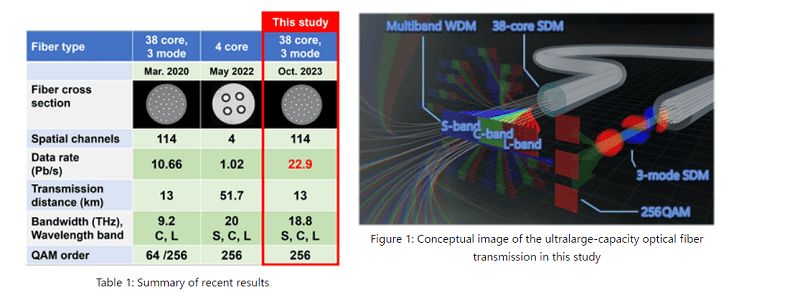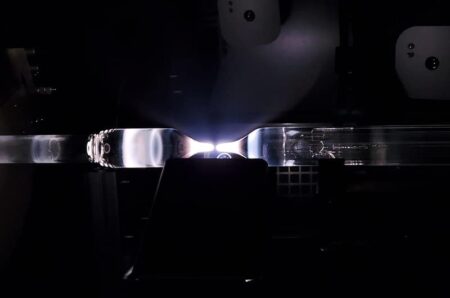Researchers have achieved a transmission speed of 22.9 petabits per second over a single fiber optic. A record with a Dutch touch.
Japanese, Italian and Dutch researchers, the latter from TU Eindhoven, have managed to achieve a maximum transmission speed of 22.9 petabits over a single fiber. This is twice as much as the previous world record of 10.66 petabits previously achieved by the same researchers.
Combining SDM with WDM
In the test track, ‘large-scale space-division multiplexing’ (SDM) technology was combined with ‘multi-band wavelength-division multiplexing’ (WDM) technology for this purpose. Furthermore, a transmission bandwidth of 18.8 Terahertz was used for this purpose.
Using a multi-band compatible MIMO receiver, the multi-band WDM and mulit-core, multi-mode SDM technology were combined. In total, this yielded 750 WDM wavelength channels. Of these, 293 were in the S frequency and 470 were in the C and L frequencies. This provided the 18.8 THz of required bandwidth for the optical signal.
Ultimately, the measured optical signal transmissivity in the single fiber was between less than 0.3 and a maximum of 0.7 petabits per second for each core. In total, this led to the maximum measured combined transmission rate of 22.9 petabits per second.
Development of ultra-large optical networks
According to the researchers, the results of the record test offer good opportunities for developing very large optical networks in the future. This will help meet the continuous pressure of growing data traffic.
The researchers also announce that they will continue their experiments in the area of using multi-band WDMs over large SDM optical fibers. Among other things, they are considering the use of randomly coupled “multimode glass fibers” (MCFs). This technique does require very large multi-band MIMO receivers.
Tip: Colt expands European network offering in partnership with Eurofiber




















